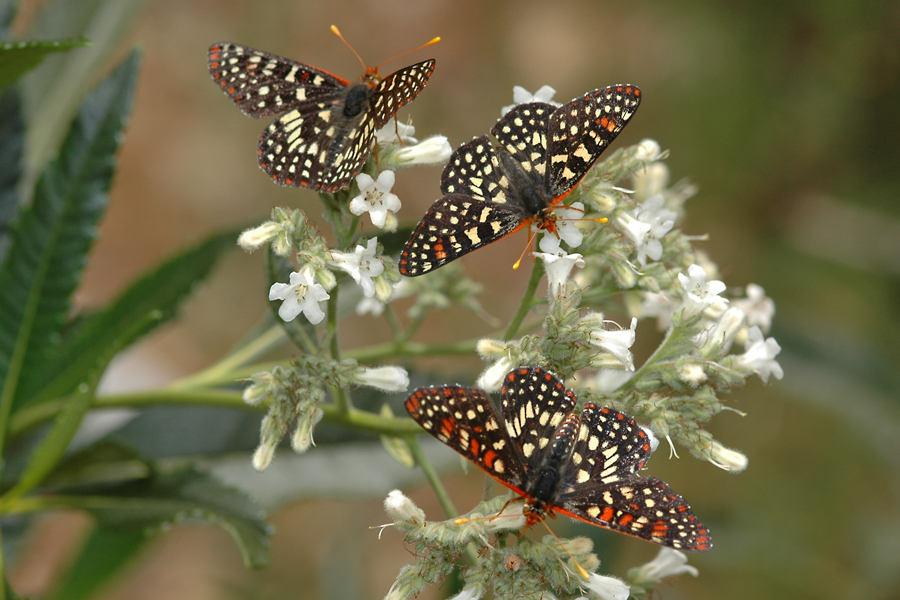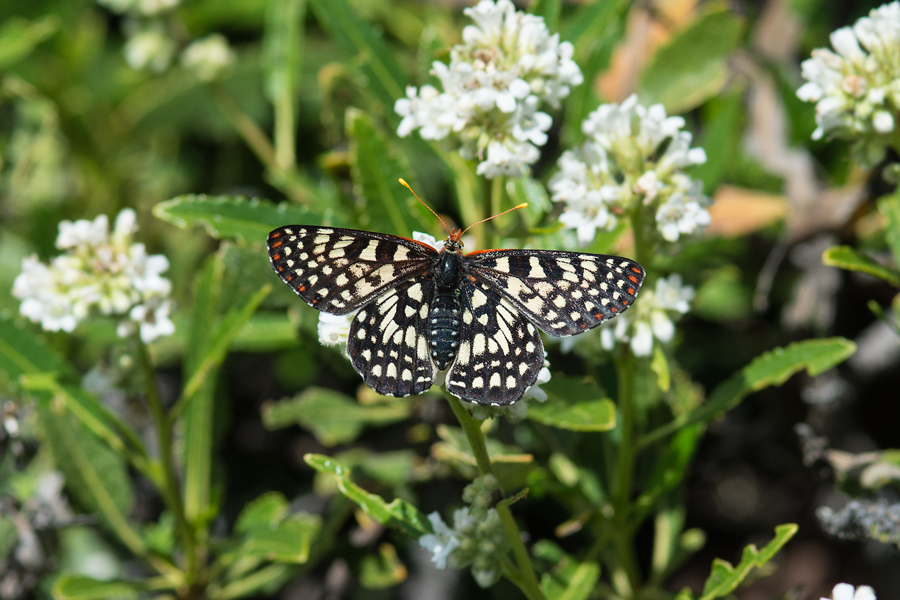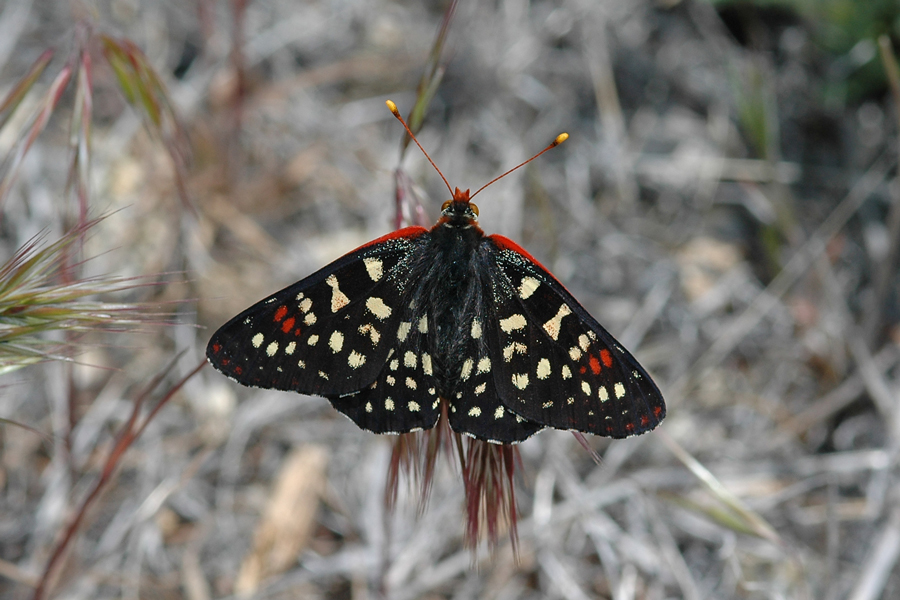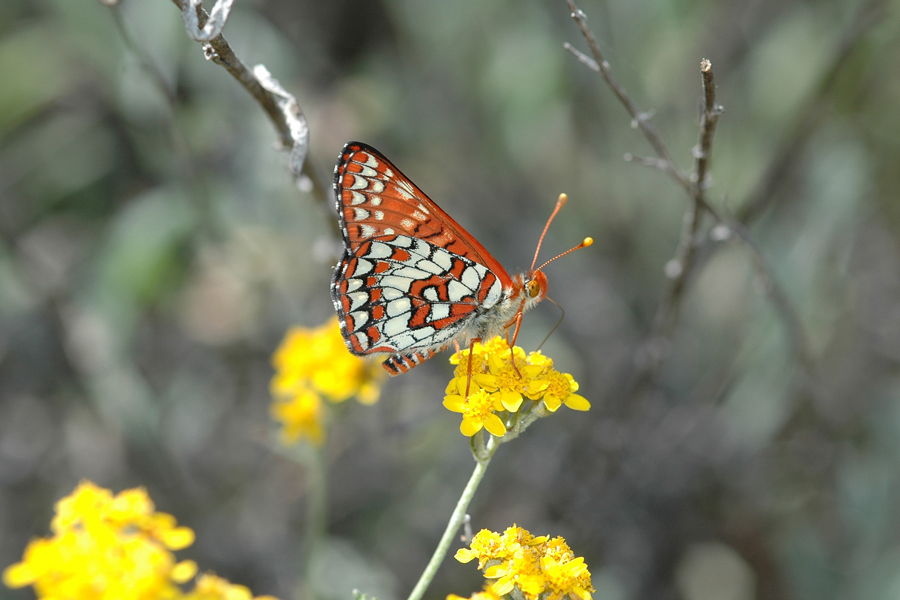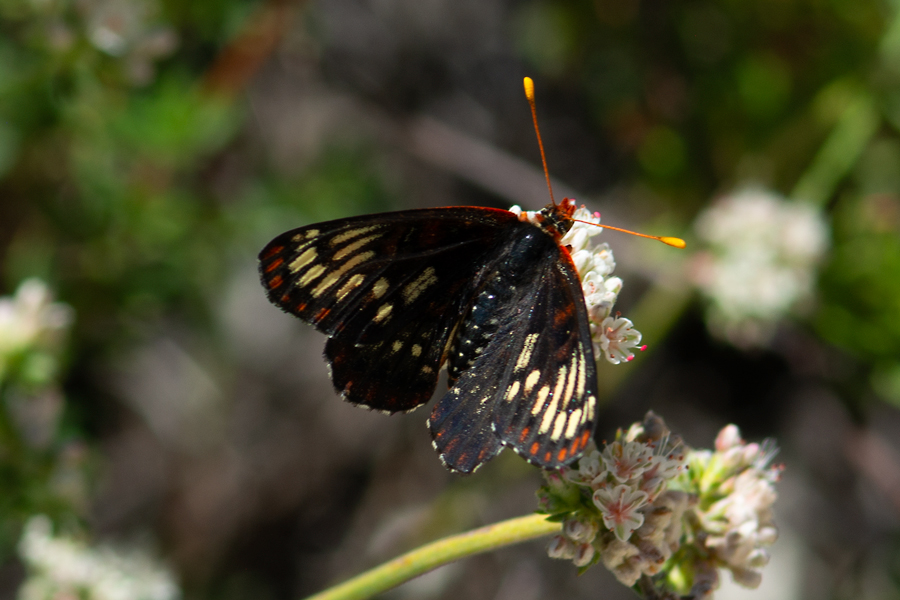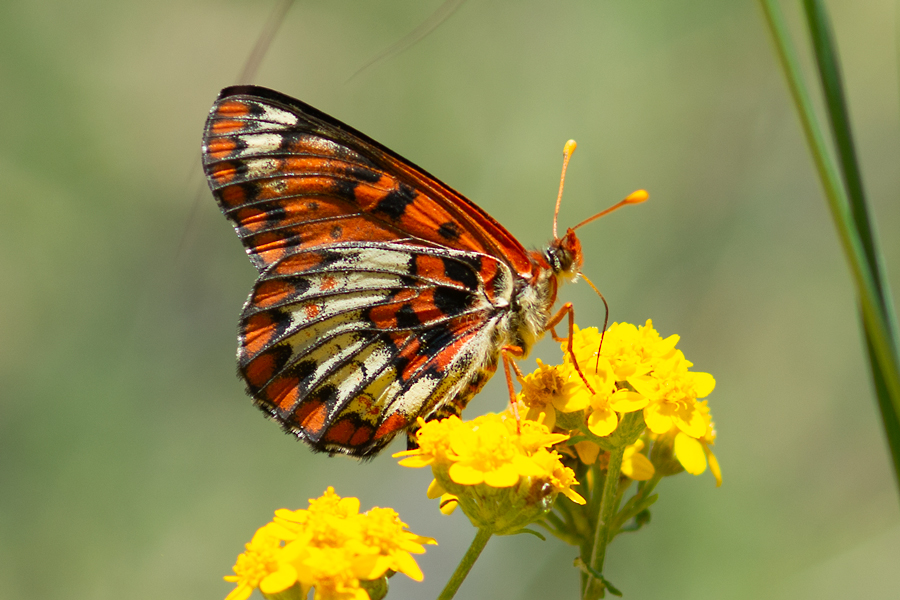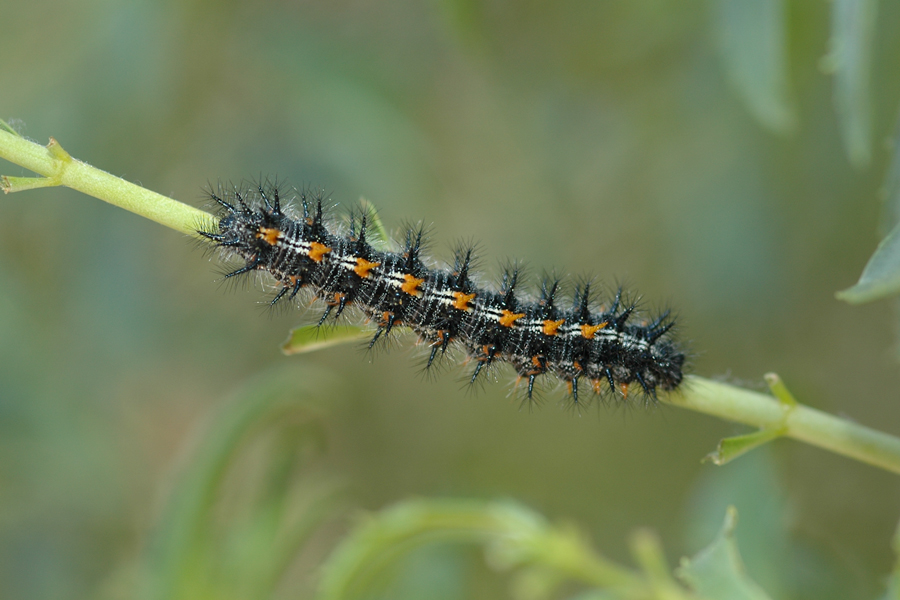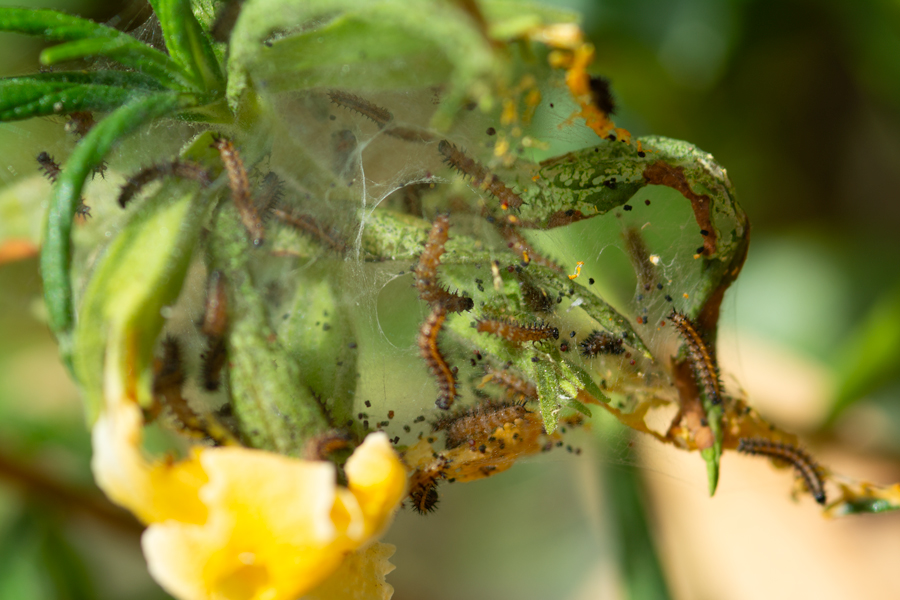Euphydryas chalcedona chalcedona
Variable (or Chalcedon) Checkerspot
A common butterfly in the late spring and early summer, found easily in the San Gabriel and Santa Monica Mountains, where they use such common plants as monkey flower, paintbrush, Keckiella ternata, and K. cordifolia. Larvae form nests in the earliest stages, and they overwinter as half-grown larvae. If conditions allow, there may be a second brood later in the year, and if conditions are exceptionally dry, larvae may hibernate and emerge a year or more later. But usually caterpillars resume feeding in the early spring and begin flying around May and into the summer, sometimes in large numbers.
As hardy and adaptable as they are, I've never seen chalcedona in the mountains around Big Bear Lake, where one instead encounters Euphydryas editha augustina as the dominant checkerspot. I'm not sure why that is.
The type locality (Mt. Tamalpais in Marin County) is discussed in the Systematics book on p.101. A neotype from Mt. Tamalpais was also designated and can be seen on the BoA website. The first photo below is as close as I could find to the neotype. Within the populations of nom. chalcedona I've had experience with in the San Gabriel and Santa Monica Mountains, there is a black ground color; what varies is the size and tone of the cream-to-white colored macules, and the amount of red, which varies from almost none in some individuals to being fairly prominent in others. And that's within the same population. Visual differences among the chalcedona subspecies can be dramatic.
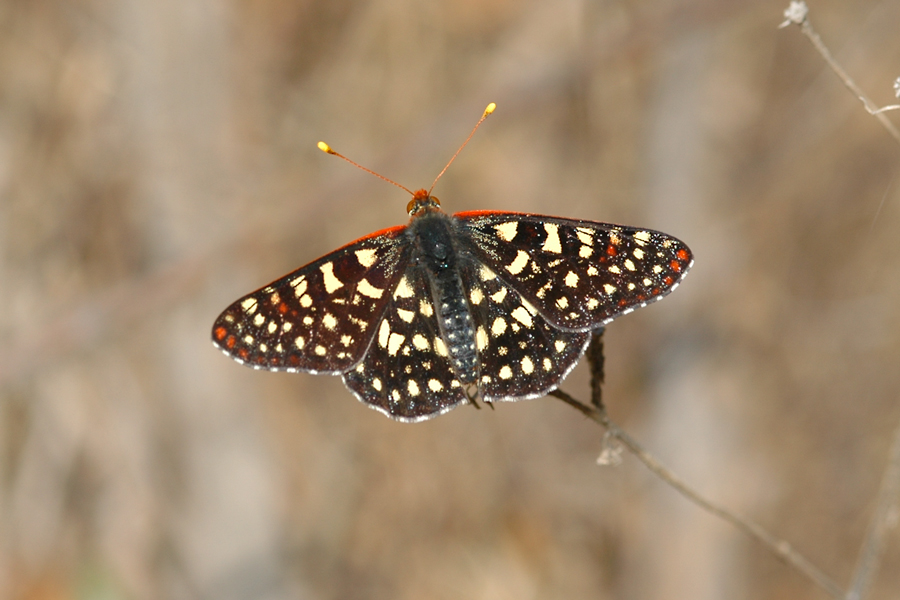
This Euphydryas c. chalcedona is similar to the neotype from Mt. Tamilpais. Rincon Road in the San Gabriels, June 9, 2007.
These are typical chalcedona. West Fork of the San Gabriel River, San Gabriel Mtns. June 1, 2007.
Euphydryas chalcedona taking nectar on Yerba Santa at Icehouse Canyon in the San Gabriel Mountains. I hadn't been up there in a few years, and after being among subspecies hennei regularly, these really stood out as darker, with more dramatically contrasting spots and less red on the dorsal side. May 24, 2017.
This one is notably dark. Sunset Peak, San Gabriel Mtns, May 11, 2007.
Another ventral of Euphydryas chalcedona chalcedona. West Fork, San Gabriels, June 2, 2006.
This aberrant individual is close to what John A. Comstock called "hemimelanica" in a 1926 paper. I found this one July 1st, 2019 in the San Gabriels above Chantry Flats.
This is the ventral of the same aberrant individual above. You don't see these everyday.
A last-instar larva from the San Gabriels on Keckiella. Angeles Crest Highway, May 15, 2007.
A larval nest on sticky monkey flower - Diplacus aurantiacus - up Santa Anita Canyon in the San Gabriels, July 22, 2019. These were easy to find, mostly on Keckiella cordifolia, which females of this population seem to prefer there. It's towards the end of the flight that these early-instar nests get common. The plants are still doing fairly well, but the summer heat is beginning to take its toll. Soon, half-grown larvae will overwinter and resume feeding in the early spring when the plants are able to provide adequate food for them. With good summer rains, a small second brood may emerge in autumn.
©Dennis Walker

